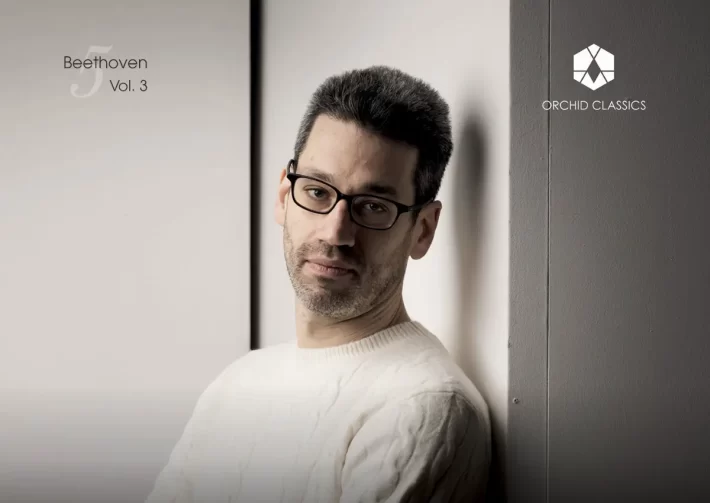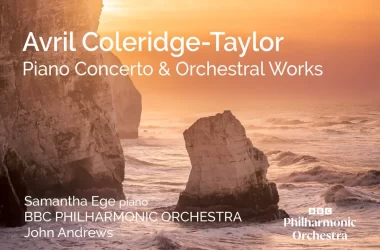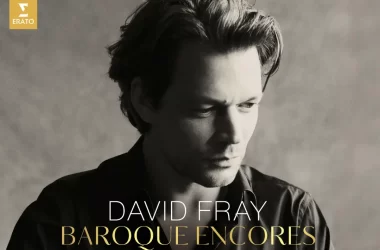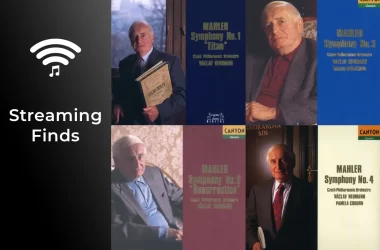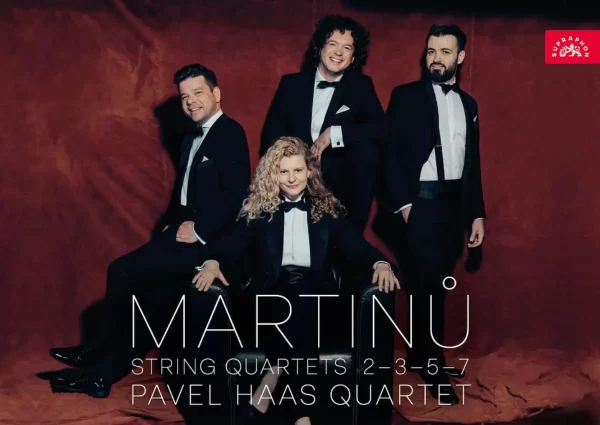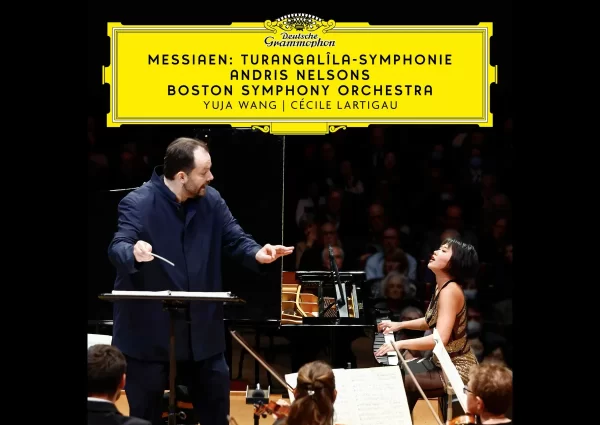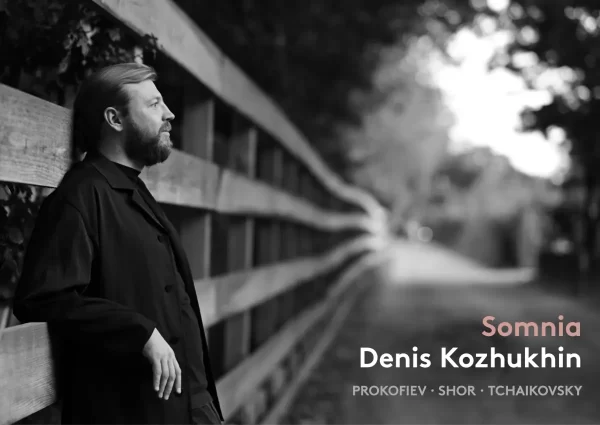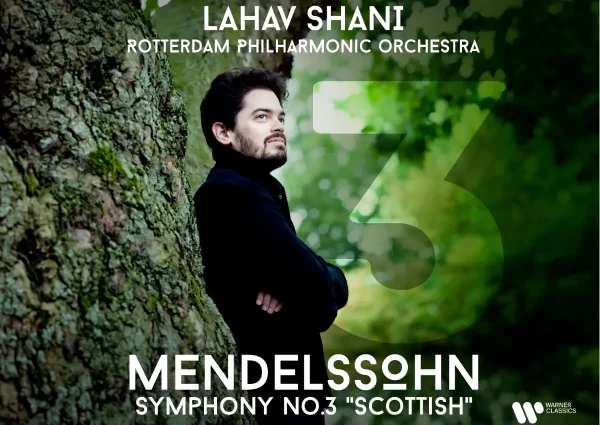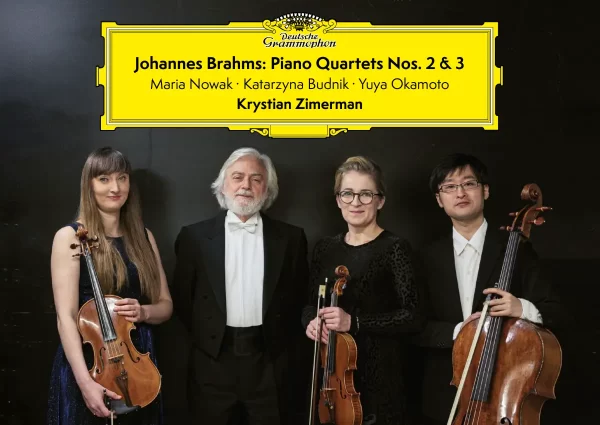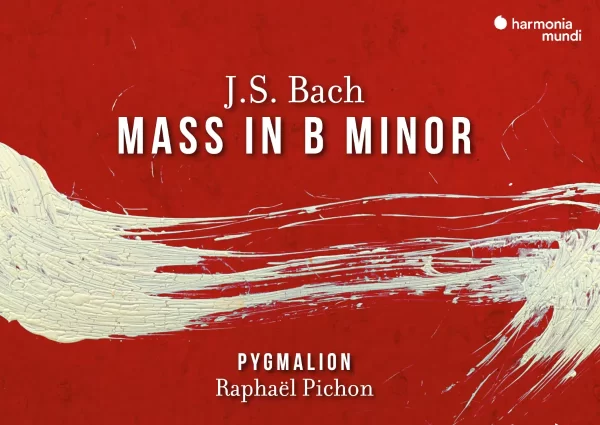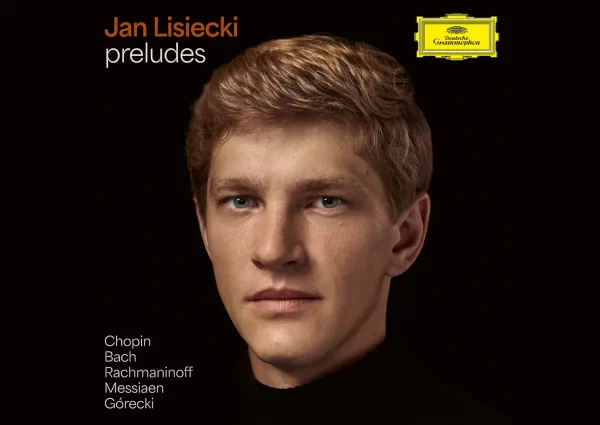Last May, I reviewed the first installment of the “Beethoven/5” project, featuring Jonathan Biss and the Swedish Radio Symphony Orchestra. Nearly a year later, Biss presents the third album in the series, which pairs each of Beethoven’s five piano concertos with a contemporary work. This new album features Beethoven’s Piano Concerto No. 2 in B-flat Major (the first composed, despite its number) paired with Timo Andres’s The Blind Bannister, a piece Biss commissioned specifically for this release.
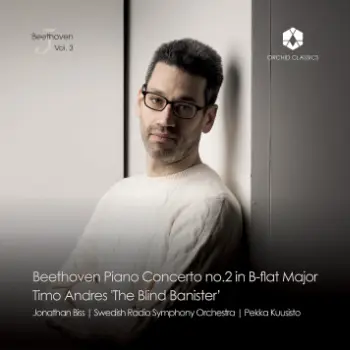
Like Beethoven’s first piano concerto, the second is idiomatically Classical. Its piano runs possess a Mozartean intricacy, which Biss plays not only with facility but also with scintillating spirit. The concerto also reflects Mozart’s airy elegance, which the orchestra conveys effectively in softer passages and more assertive moments alike.
Even as an early work, however, the B-flat Major concerto exhibits elements of Beethoven’s signature style. One example is the interesting and often unexpected harmonic twists and turns in the Allegro con brio (track 1). I would have preferred slightly more responsiveness to these harmonic shifts from both soloist and ensemble, as some moments felt a bit muted or overly restrained.
Another quintessentially Beethovenian element is the cadenza, notable for its sheer size and eclectic compositional techniques. Biss clearly delineates the progression of the opening fugal material as it expands into broader, denser textures. The almost hammer-like textures in the most driven passages are particularly noteworthy. This cadenza is far more technically demanding than those typically found in Mozart or Haydn concertos, and one senses the considerable effort required from the pianist. This is not to say he struggles with the virtuosic demands; rather, what comes across is the authentic effort involved in bringing the cadenza’s large-scale language to life.
The Adagio is beautifully rendered, thanks to The Swedish Radio Symphony Orchestra’s finely blended sound. This blend still allows individual instruments, like the horns and woodwinds in the introduction, to surface effectively at key moments. Overall, on all three movements of this concerto, the integrated orchestral sound under conductor Pekka Kuusisto is warm and satisfying.
The piano part presents a contrasting, more introverted character, which Biss imbues with lovely sensitivity and silky lyricism. The ending bars of the Adagio feature some of the most intimate moments, as keyboard solos alternate with short orchestral interludes. Here, Biss’s delicacy and transparency in pianissimos best demonstrate his superb musicianship.
The jubilant finale (Rondo, track 3) moves at a spirited but well-judged pace, effectively capturing the movement’s joviality and humor. Biss’s pristine fingerwork, crisp staccatos, and well-placed accents demonstrate his command of the music. Most importantly, his playing feels natural and uncontrived, with palpable joy and sense of fun that are clearly shared with the ensemble.

Jonathan Biss (Image: The McKnight Center for the Performing Arts, Robin Herrod)
When describing The Blind Bannister’s connection to the Beethoven concerto, Timo Andres offers an interesting disclaimer: beyond a shared tonal center (B-flat) and three-movement structure, little else directly references the earlier work. He explains that the piece originated as a cadenza for the concerto, but eventually took on an independent identity.
Though drastically different in character from the Beethoven, the work showcases some of the same polished pianistic elements Biss demonstrated earlier. These include his dynamic control and attention to intricacy, both of which are crucial in the work’s opening cadenza.
Unlike some jarringly complex contemporary pieces, The Blind Bannister proves an inviting listen due to its intriguing blend of tonality, modality, and open harmonies. Particularly clever, however, is Andres’s use of increasing harmonic complexity and layered instrumental textures to build an arch-like structure. This structure culminates in a high point that is simultaneously cacophonous and sweeping. The final two movements adopt a more strident character, but continue to offer varied and creative instrumentation.
I found the pairing of these works refreshing and the execution of both meticulous. As with the previous albums in the series, the sleeve notes are a must-read. The illuminating insights from Biss and Andres provide a valuable companion to their sincere performances. I look forward to the final two installments of Biss’s Beethoven journey.
Recommended Comparisons (Beethvoven)
Schiff | Giltburg | Perahia | Bezuidenhout

Album Details |
|
|---|---|
| Album name | Beethoven 5, Vol. 3 |
| Label | Orchid Classics |
| Catalogue No. | ORC100375 |
| Artists | Jonathan Biss, Swedish Radio Symphony Orchestra, Pekka Kuusisto |
Included with an Apple Music subscription:
Available on Presto Music
Latest Classical Music Posts

